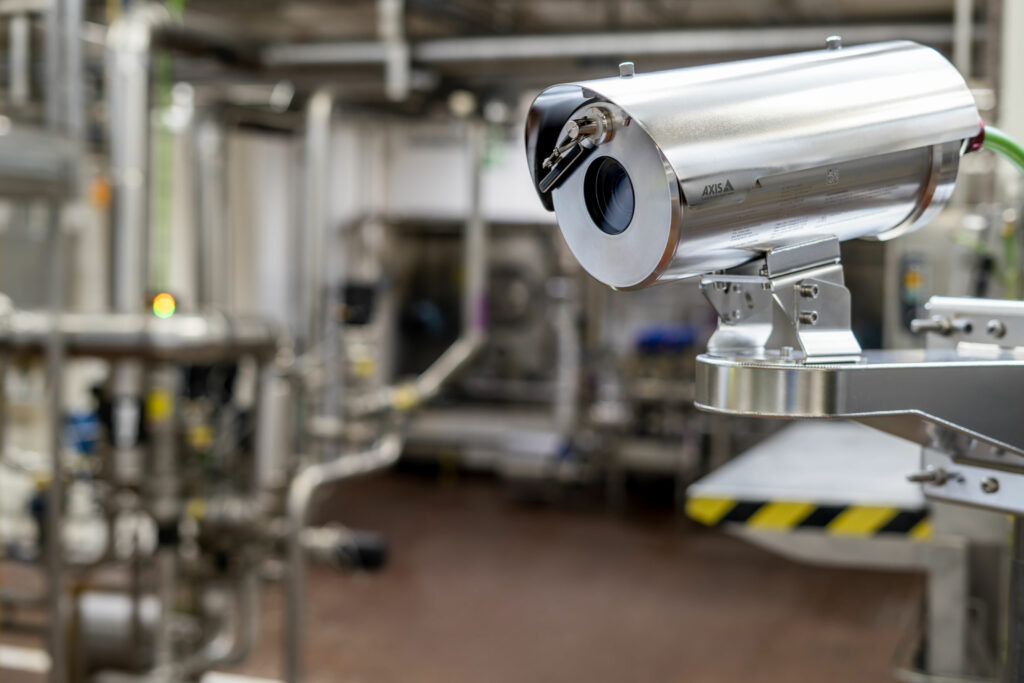
By: Joe Morgan
In today’s world, critical infrastructure and industrial operations form the bedrock of society and the economy. They play an indispensable role, from providing basic services like electricity and water to running complex industrial processes in our energy sector. However, these sectors are often marred by a substantial risk of workplace accidents. Such accidents can endanger employees’ lives and well-being while disrupting business continuity. Hence, it is of utmost importance to implement systems and strategies that help ensure workers are in the right place at the right time, significantly reducing the risk of accidents.
Canada, in 2021, saw over 900 fatalities across manufacturing, mining, oil and gas, utilities, warehousing, and waste management industries and almost 300,000 lost time claims related to injuries. It’s clear that accidents happen, but that doesn’t mean they can’t happen less often, or with less severity. Pursuing the implementation of systems that work to prevent injuries and deaths is always the right call.
Now, the goal of completely eradicating the risk of accidents is a pipe dream. Yet, adopting a proactive approach to on-site safety, augmented by the deployment of intelligent, cost-effective surveillance solutions, can drastically minimize the risk. The ultimate aim is to foster an environment that places equal emphasis on business continuity, through curtailing operational downtime, and employee well-being.
The integration of surveillance solutions into the existing infrastructure need not be an intricate process. By opting for systems that function on an open platform, it is possible to seamlessly incorporate new cameras into the existing setup. This approach ensures that previous investments can be leveraged more effectively to enhance site safety. It aids in not only improving real-time awareness of on-site risks, enabling a timely response to incidents, but also in preventing avoidable accidents and refining safety protocols for long-term security.
Real-time response to safety threats
When it comes to addressing real-time incidents, traditional fire and smoke alarms, while essential, may not be enough. Human observation and manual alarm systems often fall short in mitigating risks and improving safety levels. This is primarily due to the inability to mitigate unidentified risks, highlighting the need for superior situational awareness. Surveillance systems complement traditional measures and go the extra mile to ensure workplace safety.
On-site surveillance offers coverage that is broader in scope and higher in accuracy than human observations. Advanced technologies like thermal cameras can detect unusual temperature changes, helping identify potential gas leaks. Likewise, cameras with built-in analytics can identify smoke patterns, enabling early fire detection and prevention. The integration of such advanced surveillance tools into existing industrial control systems can offer real-time support and facilitate quicker responses to incidents.
Network audio solutions are equally vital for enhancing workplace safety. They provide a direct line of communication with on-site employees, crucial during evacuations or other emergency procedures. By coupling visual aid from network cameras with network audio solutions, potentially risky situations can be identified before they escalate into accidents. This dual approach ensures that workers receive swift support when required.
In this context, intelligent analytics can automate a multitude of safety functions. The systems can be tailored to suit the unique needs of your operations, reducing the occurrence of false alarms. This makes connected surveillance solutions increasingly crucial for real-time risk mitigation and prompt emergency response.
Identifying and mitigating risks
Moreover, intelligent video solutions are instrumental in averting avoidable accidents on-site. Using connected cameras, network audio, and intelligent analytics, your system can identify risky behaviour and alert employees directly, thereby preventing potential incidents. For instance, AI-powered solutions can be customized to detect the absence of personal protective equipment (PPE) like hard hats, sending an alert to a worker if they need to put on the necessary safety gear.
This proactive approach to accident prevention acts as a crucial safety net, ensuring that even if employees forget a safety measure, an automated system is in place to remind them. As an employer, it brings peace of mind knowing that all possible measures are being taken to ensure worker safety. An added advantage of implementing these safety measures includes a decrease in liability claims and prevention of unnecessary downtime caused by accidents and subsequent investigations.
In the era of digital revolution, privacy has emerged as a critical concern. Surveillance systems can dynamically mask or blur individuals, or just their faces, to protect worker privacy while ensuring their safety. By processing and masking video directly on the camera rather than a server, the risk of leaking unmasked footage is significantly reduced.
Analytics for the future
Beyond real-time incident management and near-term accident prevention, surveillance solutions provide valuable insights to enhance long-term safety policies. By reviewing and analysing workplace incidents, injuries, and near misses, root causes can be identified, and safety protocols can be devised to prevent future occurrences.
Footage from network cameras and other sensors, such as body-worn cameras, offer unbiased information that aids the continuous improvement of safety policies. This further enhances health and safety practices, which in turn ensures long-term business continuity.
In summary, the use of innovative, open surveillance technology enables early detection and mitigation of safety risks, thereby prioritizing workforce safety. By leveraging prior network camera investments, real-time incidents can be managed promptly, avoidable accidents can be prevented, and safety processes for the future can be enhanced. This proactive approach not only ensures worker safety but also protects the business’s bottom line by minimizing the risk of claims and operational downtime. The role of intelligent surveillance systems in revolutionizing industrial and critical infrastructure safety cannot be overemphasized, as it remains crucial for ensuring a secure, productive, and prosperous future.

Joe Morgan is the Segment Development Manager, Critical Infrastructure for Axis Communications
Share This:
Next Article




